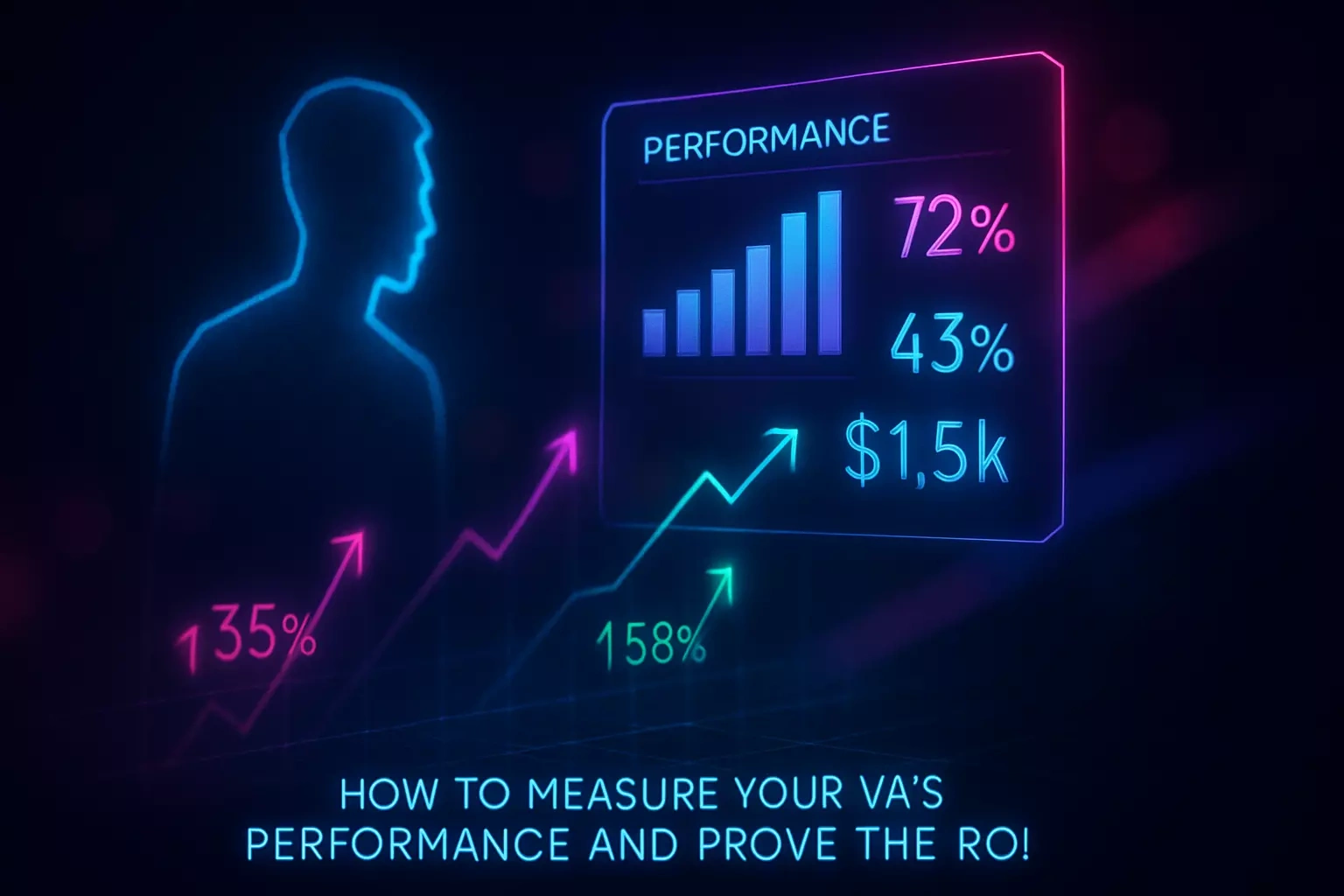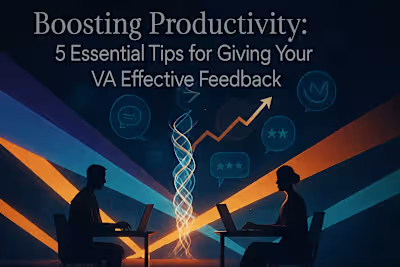How to Measure Your VA’s Performance and Prove the ROI

How to Measure Your VA's Performance and Prove the ROI
Defining Key Performance Indicators (KPIs) for Your Virtual Assistant
Quantitative Metrics: The Numbers That Matter
Qualitative Metrics: Assessing Quality and Initiative
Role-Specific KPIs: Tailoring Metrics to the Job
Tools and Systems for Tracking VA Performance
Project Management Platforms
Time Tracking Software
Communication and Feedback Logs
Calculating the Return on Investment (ROI) of Your VA
The Financial ROI: Cost Savings and Revenue Growth
The Non-Financial ROI: Time, Productivity, and Sanity
Conducting Effective Performance Reviews
Setting a Regular Cadence
Structuring the Conversation
Using Data to Guide the Discussion
Conclusion
References
How to Measure Your VA's Performance and Prove the ROI
Defining Key Performance Indicators (KPIs) for Your Virtual Assistant
Quantitative Metrics: The Numbers That Matter
Qualitative Metrics: Assessing Quality and Initiative
Role-Specific KPIs: Tailoring Metrics to the Job
Tools and Systems for Tracking VA Performance
Project Management Platforms
Time Tracking Software
Communication and Feedback Logs
Calculating the Return on Investment (ROI) of Your VA
The Financial ROI: Cost Savings and Revenue Growth
The Non-Financial ROI: Time, Productivity, and Sanity
Conducting Effective Performance Reviews
Setting a Regular Cadence
Structuring the Conversation
Using Data to Guide the Discussion
Conclusion
References
Posted Jun 30, 2025
Unlock the full potential of your virtual assistant. Learn to track key performance indicators (KPIs) and calculate the true ROI of your investment.









